Trong các ngành công nghiệp như khai thác mỏ, dầu khí, tạo hình kim loại, chế biến gỗvà sản xuất, vật liệu chống mài mòn là rất quan trọng.
Khi thiết bị hoạt động trong môi trường khắc nghiệt, các bộ phận phải chịu được ma sát, áp suất, nhiệt độ và ăn mòn. Hai trong số những vật liệu phổ biến nhất cho các bộ phận hao mòn là cacbua vonfram và thép.
Việc lựa chọn đúng vật liệu có thể ảnh hưởng đến năng suất, chi phí và thời gian ngừng hoạt động. Bài viết này so sánh vonfram cacbua với thép về hiệu suất, chi phí, độ bền và ứng dụng tốt nhất - giúp các nhà ra quyết định lựa chọn vật liệu phù hợp cho hoạt động của mình.
Cacbua Vonfram là gì?
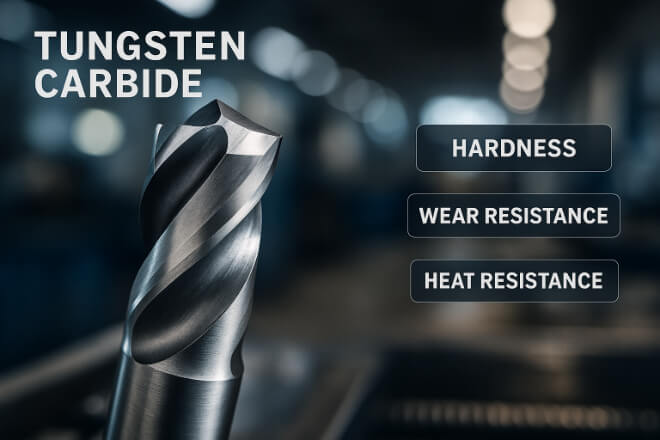
Cacbua vonfram là một hợp chất được tạo thành từ các nguyên tử vonfram và cacbon. Nó cực kỳ cứng - gần như cứng bằng kim cương - nhưng vẫn có độ dẻo dai tốt.
Điều này làm cho nó trở thành sự lựa chọn lý tưởng cho các bộ phận chịu mài mòn liên tục hoặc điều kiện khắc nghiệt.
Tính chất chính của cacbua vonfram:
Rất cao độ cứng (8,5–9 trên thang Mohs)
Xuất sắc khả năng chống mài mòn
Khả năng chịu nhiệt cao
Khả năng chống ăn mòn tốt
Tuổi thọ dài
Các ứng dụng phổ biến bao gồm dụng cụ cắt, mũi khoan khai thác, phớt bơm, lớp lót chống mài mòn và khuôn mẫu chính xác.
Thép là gì?
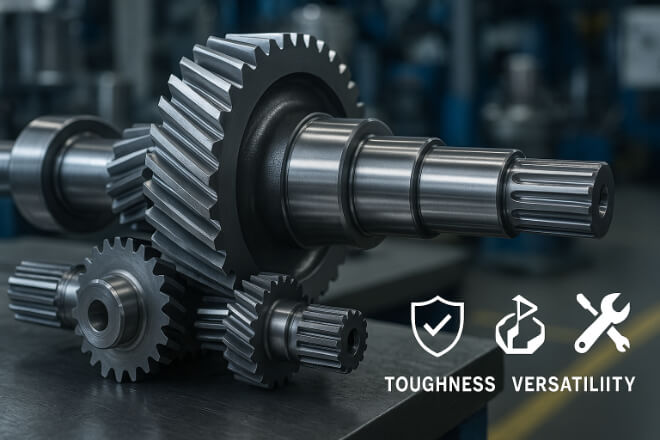
Thép là hợp kim được tạo thành chủ yếu từ sắt và cacbon, thường có thêm các nguyên tố khác như crom, niken hoặc mangan để cải thiện hiệu suất.
Thép được ưa chuộng vì độ bền, độ cứng và tính linh hoạt. Thép cũng dễ gia công và hàn hơn so với cacbua vonfram.
Tính chất chính của thép:
Cao độ dẻo dai và sức mạnh
Dễ dàng gia công và định hình hơn
Tiết kiệm chi phí cho các bộ phận lớn
Các loại thép khác nhau cho các mục đích sử dụng khác nhau (ví dụ: thép dụng cụ, thép không gỉ, thép cacbon cao)
Thép được sử dụng rộng rãi để làm bánh răng, trục, bộ phận kết cấu và các thành phần kỹ thuật chung.
Cacbua Vonfram so với Thép: So sánh tính chất
| Tài sản | Cacbua Vonfram | Thép |
|---|---|---|
| Độ cứng | Cực kỳ cao (8,5–9 Mohs) | Thấp hơn (4–8 Mohs, tùy thuộc vào cấp độ) |
| Khả năng chống mài mòn | Tuyệt vời, lý tưởng cho điều kiện mài mòn | Tốt, nhưng mòn nhanh hơn khi bị mài mòn |
| Khả năng chịu nhiệt | Rất cao, giữ được độ cứng ở nhiệt độ cao | Trung bình, có thể mất độ cứng ở nhiệt độ cao |
| Khả năng chống ăn mòn | Cao, đặc biệt là với lớp phủ | Thay đổi — thép không gỉ chống ăn mòn tốt |
| Độ dẻo dai | Trung bình (có thể bị sứt mẻ khi chịu tác động mạnh) | Cao, tốt hơn cho tải trọng va đập |
| Khả năng gia công | Khó, đòi hỏi dụng cụ kim cương hoặc cacbua | Dễ dàng gia công bằng các công cụ tiêu chuẩn |
| Trị giá | Cao hơn | Thấp hơn |
Độ bền trong điều kiện khắc nghiệt
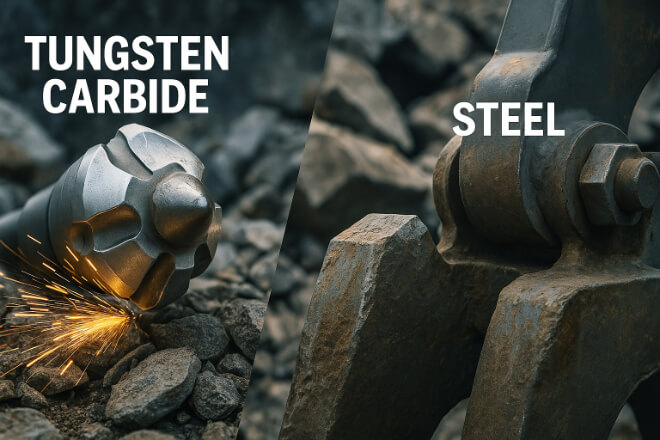
Cacbua vonfram nổi bật về khả năng chống mài mòn và chống mài mòn.
Trong khai thác mỏ hoặc gia công kim loại, các công cụ và linh kiện làm bằng cacbua vonfram thường có tuổi thọ cao hơn từ 3–10 lần so với thép tương đương. Điều này giúp giảm thời gian ngừng hoạt động và chi phí thay thế.
Tuy nhiên, thép có thể tốt hơn cacbua vonfram khi các bộ phận phải chịu tác động mạnh hoặc lực uốn.
Thép cao hơn độ dẻo dai có nghĩa là nó có thể hấp thụ lực va chạm mà không bị nứt, khiến nó phù hợp hơn cho một số ứng dụng kết cấu.
Cân nhắc về chi phí
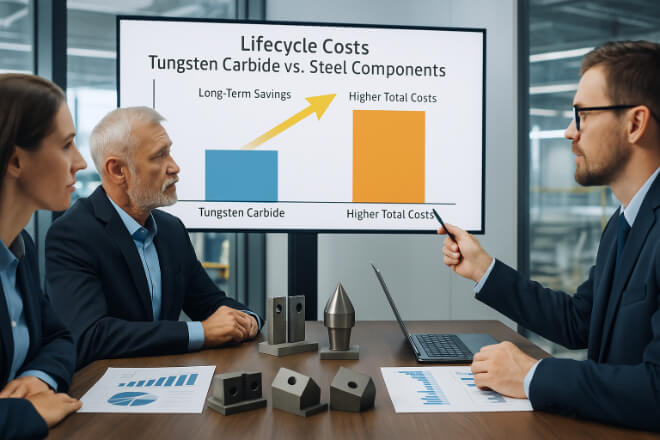
Thoạt nhìn, các chi tiết cacbua vonfram có giá cao hơn thép. Tuy nhiên, khi tính đến tổng chi phí vòng đời - bao gồm thay thế, thời gian ngừng hoạt động và bảo trì - cacbua vonfram thường tiết kiệm hơn.
Ví dụ, khuôn cắt cacbua vonfram có thể đắt hơn khuôn cắt thép từ 2–3 lần nhưng lại bền hơn từ 5–10 lần, khiến nó trở thành khoản đầu tư tốt hơn trong nhiều trường hợp.
Tính phù hợp của ứng dụng
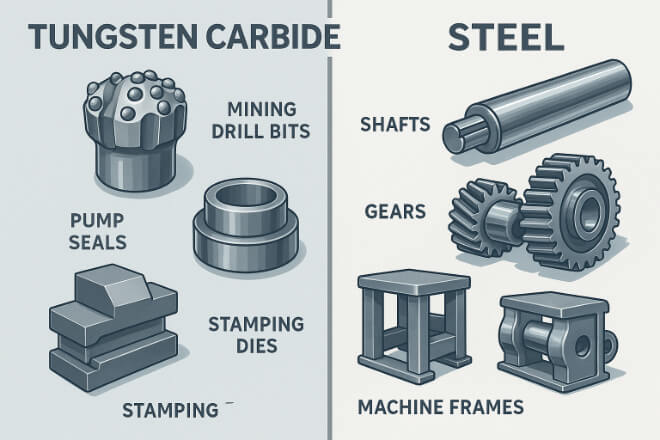
1). Khi nào nên sử dụng cacbua vonfram:
Sự mài mòn và hao mòn cực độ
Nhiệt độ cao
Dung sai độ chính xác
Hoạt động liên tục với thời gian chết tối thiểu được phép
1.1). Ví dụ:
Mũi khoan khai thác
Phớt bơm trong dầu khí
Khuôn dập kim loại
Lưỡi cưa gỗ
2). Khi nào nên sử dụng thép:
Tải trọng va đập lớn và uốn cong
Môi trường nhiệt độ thấp hơn
Các ứng dụng mà chi phí là yếu tố chính
Các bộ phận lớn sẽ quá đắt khi gia công bằng cacbua
2.1). Ví dụ:
Khung máy
Trục và bánh răng
Các thành phần cấu trúc chung
Tóm tắt ưu và nhược điểm
| Vật liệu | Ưu điểm | Nhược điểm |
|---|---|---|
| Cacbua Vonfram | Khả năng chống mài mòn tuyệt vời, độ cứng cao, khả năng chịu nhiệt và chống ăn mòn tốt, tuổi thọ cao | Đắt tiền, giòn khi chịu va đập mạnh, khó gia công |
| Thép | Độ bền cao, chi phí thấp, dễ gia công, đa năng | Khả năng chống mài mòn thấp hơn, có thể mất độ cứng ở nhiệt độ cao, cần bảo dưỡng nhiều hơn |
Lựa chọn giữa cacbua vonfram và thép
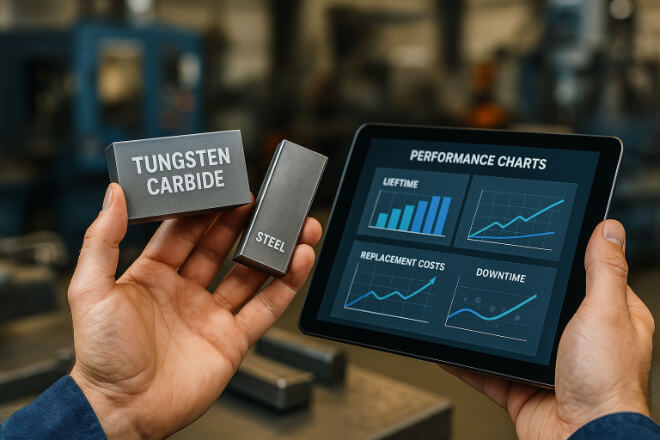
Việc lựa chọn vật liệu phù hợp phụ thuộc vào:
Loại hao mòn – mài mòn, dính, va đập hoặc ăn mòn
Nhiệt độ hoạt động – các quy trình nhiệt độ cao có thể yêu cầu cacbua
Kích thước bộ phận – thép tiết kiệm hơn cho các bộ phận lớn
Yêu cầu về tuổi thọ – cacbua thường có nghĩa là ít phải thay thế hơn
Ngân sách – lập kế hoạch chi phí ngắn hạn so với dài hạn
Đối với nhiều ngành công nghiệp, cách tiếp cận tốt nhất là kết hợp sử dụng thép để hỗ trợ kết cấu và cacbua vonfram để làm bề mặt chịu mài mòn.
Mẹo bảo trì để tối đa hóa hiệu suất
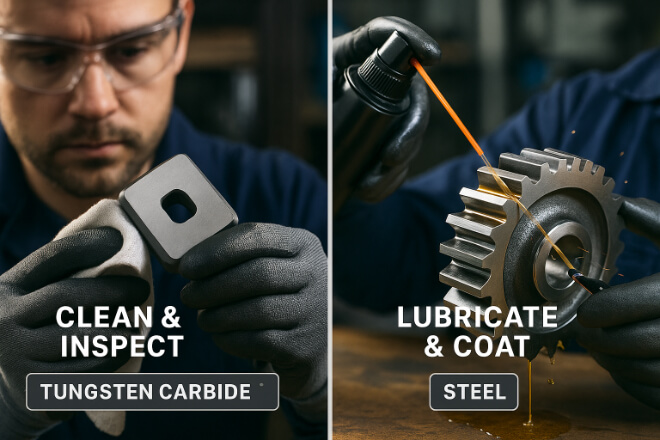
1). Đối với cacbua vonfram:
Tránh va chạm đột ngột
Sử dụng lắp đặt phù hợp để ngăn ngừa nứt do ứng suất
Thường xuyên vệ sinh để tránh bị ăn mòn bởi hóa chất
2). Đối với thép:
Áp dụng lớp phủ bảo vệ để chống ăn mòn
Duy trì bôi trơn để giảm mài mòn
Kiểm tra vết nứt hoặc biến dạng thường xuyên
Phần kết luận
Trong cuộc tranh luận về vật liệu cacbua vonfram so với thép, không có bên nào chiến thắng. Cacbua vonfram chiếm ưu thế về khả năng chống mài mòn và ứng dụng nhiệt độ cao, trong khi thép mang lại lợi thế về độ bền và chi phí cho các ứng dụng kết cấu và chịu va đập mạnh.
Người ra quyết định nên cân nhắc tổng chi phí sở hữu, nhu cầu về hiệu suất và điều kiện vận hành. Trong nhiều trường hợp, việc kết hợp cả hai vật liệu trong một hệ thống duy nhất mang lại lợi ích tối ưu cho cả hai yếu tố: độ bền và độ cứng.
Nếu bạn muốn biết thêm chi tiết về bất kỳ công ty nào, vui lòng liên hệ với chúng tôi.
